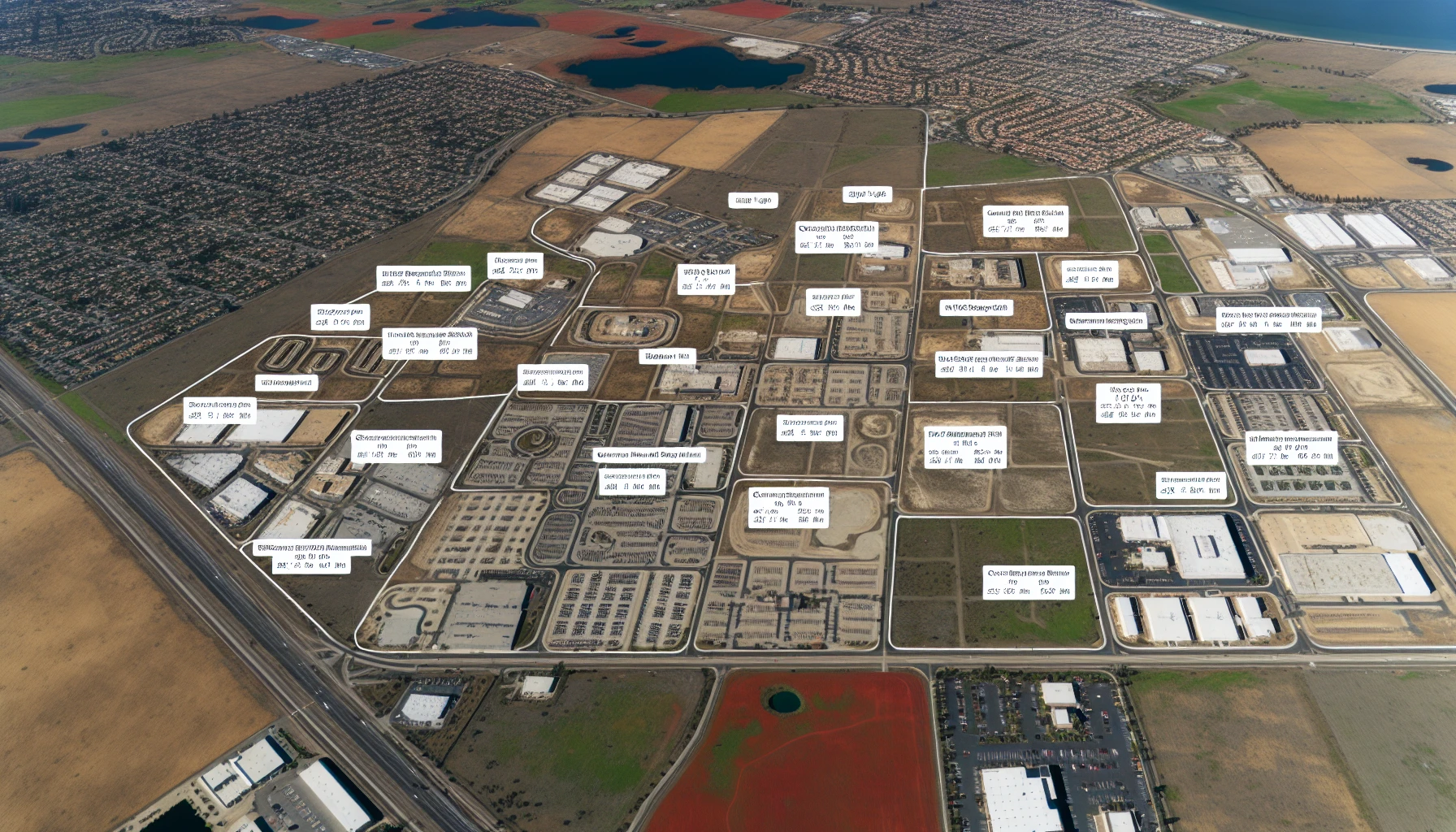
Imagine embarking on a self-storage investment journey, only to realize midway that you overlooked crucial factors that could make or break your venture. This is where a self-storage feasibility study comes into play. It helps you avoid costly mistakes, understand market dynamics, and set the stage for a profitable and successful self-storage business.

A self-storage feasibility study is key to evaluating the profitability and practicality of a business idea as it assists in:
A comprehensive feasibility study for self-storage generally includes various feasibility studies, such as a thorough feasibility study that covers:
By accounting for all these factors, you can proceed with your self-storage investment with confidence, assured that you have addressed all aspects and are well-prepared for success.

Market research and demand analysis involve a detailed analysis of demographics, target market, and competition to guarantee a profitable self-storage investment. Data should be sourced from multiple reliable sources, including industry databases and publications, government resources, independent consumer-research, and others. This data can help in estimating construction costs for a self-storage facility.
Research indicates that women make up approximately 84% of self-storage patrons, though men are responsible for over 95% of the actual move-ins. Understanding the demographics of your potential customers can significantly impact your marketing strategies and the overall success of your self-storage facility. Factors like security features, computerized entry-controlled gates, personalized coding, and security cameras also play a significant role in attracting self-storage tenants.
Understanding demographics and the target market is vital for accurately estimating the potential demand for self-storage services in a specific area. Measurements used regularly to assess self-storage demand in a particular area are square feet per capita and square feet per household. These are ideal methods to gauge the demand for such services. A demographic service that utilizes postal counts is more precise than one that does not, which can have inaccuracies of up to fifty percent.
When conducting a self-storage feasibility study, it is important to consider the following factors:
Taking these factors into account will help in determining the feasibility of a self-storage facility in a specific location.
Identifying competition and evaluating existing facilities allows for an assessment of market saturation and reveals potential areas for differentiation. Visiting local self-storage facilities can provide insight into the size and quality of their units, as well as assess the cleanliness and security features. Visibility from the road and accessibility are key features of a self-storage facility.
When conducting research on the local competition for a self-storage business, it is important to consider location, size, rental rates, occupancy, and other pertinent details of competitors. To determine competitive rental rates, it is recommended to survey other facilities within the trade radius either in person or by phone, and compile the data in a spreadsheet. Gathering information about the competition’s rent rates by shopping around and taking note of what the manager says regarding the availability of unit sizes can provide insight into their occupancy.

Choosing an appropriate site is a critical factor in a self-storage feasibility study, as it plays a significant role in determining the success of a self-storage facility. When selecting a site for a self-storage facility, it is important to consider:
Land costs for self-storage facilities in major cities typically range from $1.25 to $3.25 per square foot. The average cost for constructing a self-storage facility is estimated to be between $25 and $70 per square foot, exclusive of land and site improvement expenses. The old fisherman’s adage mentioned in the source section states that “90% of the fish are in 10% of the lake”. This emphasizes the significance of location in the success of a self-storage facility.
Considering land costs and construction expenses is a necessary step when evaluating the financial feasibility of a self-storage project. The cost of land for self-storage facilities in urban areas can generally range from $1.25 to $6.82 per square foot, depending on the location and associated development costs. The cost of constructing a self-storage facility can range from $25 to $70 per square foot, not including land or site improvement costs.
The land costs for self-storage facilities are impacted by factors such as:
Additionally, the location of the facility and associated overhead costs can also have an effect on the land costs. Evaluating land costs and construction expenses is a vital step in ensuring the financial viability of your self-storage project.
Research indicates that 85% of self-storage business comes from drive-by traffic, making traffic counts and visibility critical components of a self-storage feasibility study. When considering sign ordinances, it is important to account for the possibility of visibility obstructions. Traffic statistics are readily available online. They are typically accessible from the county or city website..
Visibility and drive-by traffic, traffic counts, location, and demographics are typically taken into consideration when determining the traffic patterns around a potential self-storage facility location. Ensuring high visibility and accessibility to your self-storage facility can significantly impact customer acquisition and the overall success of your business.

Financial projections offer a glimpse into the potential profitability of the venture. When constructing a self-storage facility, it is important to consider the capital costs, ongoing operating expenses, and expected revenue. The primary sources of revenue for self-storage facilities include:
The industry standard for estimating operational costs for a self-storage facility is $2.75 to $3.25 per square foot of the facility. The national average is $3.78 per square foot. Additionally, one can estimate the expense line item by using $.20 per Gross Square Foot of the facility.
Assessing the financial projections and viability of your self-storage project can help you make informed decisions and ensure a successful investment.
Operating a self-storage facility comes with potential risks such as theft, damage to stored items, accidents like slips and falls, low occupancy rates, and competitive and staffing pressures. A range of risk assessment methodologies are suitable for a self-storage facility, such as site-specific risk assessment, inventory assessment, physical security risk assessment, and fire risk assessment. These methodologies can provide a thorough assessment of potential risks and vulnerabilities.
To reduce risks in a self-storage business, measures such as:
may be taken. By addressing potential risks and uncertainties, you can safeguard your self-storage investment and ensure long-term success.
Self-storage facilities may obtain financing from various sources including traditional bank loans, small business loans, merchant cash advances, bridge loans, SBA loans, online lenders, loan brokers, and hard money loans. The typical terms and conditions for loans offered for self-storage facilities typically include loan rates and terms, loan covenants, names of tenants, limits on occupancy, and fixed interest rates. Different lenders may have varying terms and conditions.
To approach venture capitalists or private equity firms for a self-storage business, follow a series of steps:
Live Oak Bank, Kiavi, and Lendio are all reputable finance companies that specialize in loans for the self-storage industry. Securing financing and working with industry experts can significantly contribute to the success of your self-storage investment.
Regulatory compliance and environmental considerations form key elements of a self-storage feasibility study to ensure the project adheres to all relevant legal regulations and minimizes environmental impact. Self-storage businesses are subject to zoning laws and regulations, state statutes and lien laws, and must comply with local laws regarding the storage of certain items.
A self-storage business can ensure compliance with zoning regulations by consulting with the local zoning department, meeting the requirements for commercial businesses, verifying proper zoning, reviewing local regulations, and adhering to specific zoning laws. Not adhering to environmental regulations in the self-storage industry can lead to various repercussions, such as environmental harm, fines and penalties, legal repercussions, damage to reputation, and increased operational expenses.
Ensuring regulatory compliance and environmental considerations in your self-storage feasibility study can prevent potential issues and contribute to the long-term success of your facility.

Planning the mix of units and amenities is vital in identifying the perfect blend of unit sizes and services to meet customer needs and maximize revenue. Exit surveys have indicated that the following factors contribute to tenant dissatisfaction:
When determining the unit mix in a self-storage facility, it is important to consider several factors:
The most common unit sizes in self-storage facilities are typically 10x10 and 10x20 units, offering a good compromise between space and affordability and catering to a variety of storage needs. Proper unit mix and amenities planning can significantly impact the success of your self-storage facility.
Employing effective marketing tactics and customer acquisition strategies is crucial for attracting customers to a self-storage facility and ensuring its long-term sustainability. The most effective marketing tactics for self-storage facilities include:
To increase their customer base, a self-storage facility can:
Digital marketing has enabled self-storage operators to gain insight into their customers’ behaviors in real-time and adjust marketing budgets accordingly, as well as providing opportunities for customer engagement and lead generation. Employing effective marketing tactics and customer acquisition strategies can significantly contribute to the success of your self-storage investment.
In conclusion, conducting a thorough self-storage feasibility study is crucial in determining the profitability, viability, and success of your self-storage investment. By considering market research, demand analysis, site selection, location factors, financial projections, risk assessments, securing financing, regulatory compliance, environmental considerations, unit mix and amenities planning, and marketing tactics, you can set yourself up for a successful self-storage venture and secure a profitable investment for years to come.
Feasibility studies can be expensive, ranging from 20,000 USD to 500,000 USD depending on the scope of work.
Yes, you can do your own feasibility study, although it is often beneficial to work with a team of stakeholders due to the amount of work involved.
An independent feasibility study is a report conducted by a third-party, that objectively evaluates the technical, economic, financial, legal, and environmental considerations of a proposed project. This analysis helps to determine the viability of the idea, technology, or new business venture.
A typical example of a feasibility study is when a hospital conducts one to evaluate the potential of expanding its building. The results of the study will help determine whether the project should be pursued or not.
The essential components of a self-storage feasibility study involve recognizing potential advantages, expenses, and hazards.